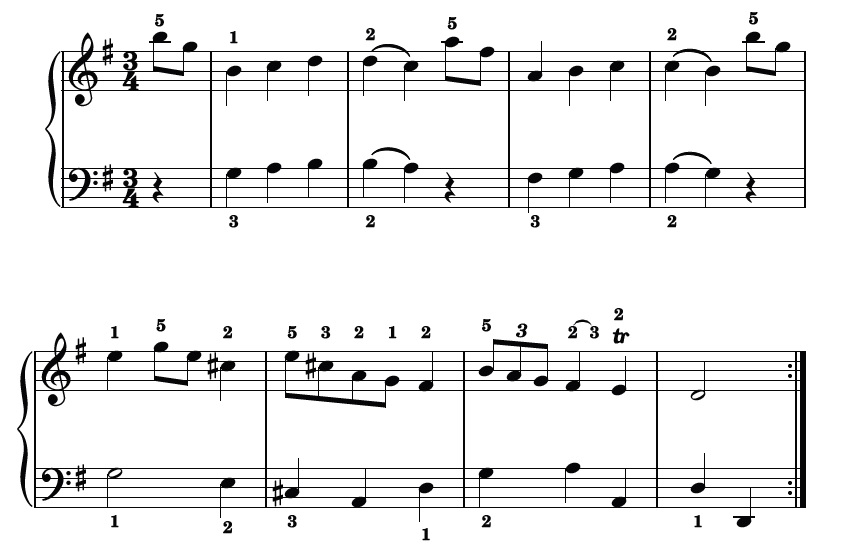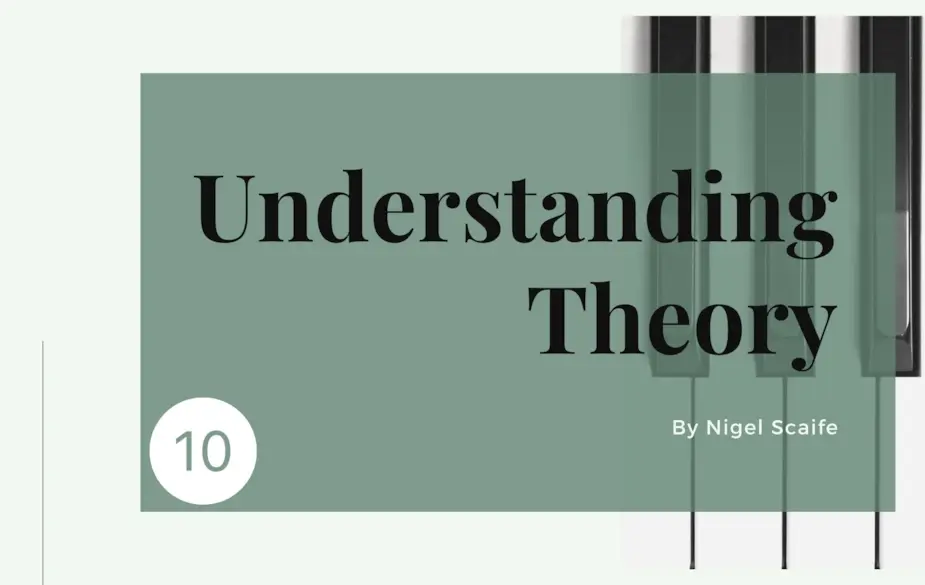Form is what makes music out of sound. Nigel Scaife introduces some basic principles of motif, phrase and binary form which are the building blocks for composers of any level
In part 9, we looked at More complex ornaments such as turns and appoggiaturas.
In the next few theory articles we’re going to be considering aspects of form in music. It’s a vast subject which is incredibly rich and diverse, potentially covering everything from simple melodies and dance forms to fugue, sonata forms and the complex structures of pieces such as Liszt’s Sonata in B minor.
As well as outlining the common designs that composers have used over the centuries, we’re going to look at some of the fundamental principles underlying the way music is constructed. Through analysing the form of the music we’re playing or listening to we can learn more about its true nature and the way it works.
This is rather like a mechanic taking an engine apart and putting it back together again. The process leads to greater appreciation and enjoyment, as well as the kind of insights we need to interpret and communicate music effectively as pianists.
We should begin by asking the obvious question: what is form in music? While it’s been defined in numerous ways over the centuries, most definitions are along the lines of it being the outcome of the arrangement of ideas in sound. These ideas might be quite clear-cut, or they might be obscure and abstract, or they might alternate between the two. Either way, to create a coherent musical expression there must be some kind of underlying logic.
Opening the bonnet of the engine, to continue the mechanical analogy, rolling up our sleeves and getting our hands dirty with some spanners, is all about finding that logic and deepening our understanding of how it all works.
If you have entered the Pianist Composing Competition before, or you plan on entering our 2022 edition, you will want to think carefully about form as you write your piece. Here are some pointers to help you on your way.
Space becomes time
When thinking about form in the relatively abstract context of music, it can be useful to think about structures in the concrete or plastic domains of sculpture or architecture. While a building has a physical shape and is made of certain materials which exist in space, the material of music is sound which exists in time.
It is the arrangement of that sonic material which gives us the form of the music. Whether composing a simple or complex piece, the composer has to plan the music with the same care as an architect designing a building. The elements of shape, proportion and balance must be considered in both cases. Unlike the architect, however, the composer has to take on the responsibilities of both designer and builder. If you’ve ever tried to write your own music you will know that coming up with some ideas is relatively easy. It’s much harder to join them up and work out what comes next!

While we will look at some of the main categories of musical form, such as binary and ternary, it’s important to acknowledge that form is not a fixed element or something like a formula. Standard forms are not like moulds into which composers simply pour their music. In a sense, every piece of music creates its own form. Erik Satie’s Trois morceaux en forme de poire (Three Pieces in the Form of a Pear) serves as a wonderful reminder of this principle.
Satie claimed that he wrote this set of seven pieces (tongue firmly in cheek given his title!) in response to a criticism from his friend Debussy who had complained that Satie paid too little attention to form. Satie responded to the conductor Vladimir Golschmann: ‘I brought them to Debussy who asked, “Why such a title?” “Why? Simply, my dear friend, because you cannot criticise my Pieces in the shape of a pear. If they are en forme de poire they cannot be shapeless!”’
Motifs and phrases
We should start with the smallest formal unit of sound that can legitimately be considered music. A single note makes little expressive effect by itself; it’s like a single letter in literature. Just as in literature we need words to make sentences, in music we usually need at least two or three notes to create something intelligible, which might be compared to a word. This is a motif. A motif can be defined as a small identifiable musical idea, whether it be comprised of some pitches, a rhythmic unit or more commonly a combination of both. Motifs can be thought of as the cells that are developed in different ways during the course of a piece of music. The rhythmic identify is often the most easily identifiable feature of a motif when it reappears in a piece, rather than its pitch content.
Perhaps the most celebrated example of how a short motif can be developed is the so-called ‘fate motif ’ which opens the Fifth Symphony of Beethoven. An inventive use of motifs – building blocks into monuments, or cells into creatures of sound – is one of the most extraordinary aspects of Beethoven’s genius.
A phrase can be defined as a complete musical idea, of varying length, which can be likened to a sentence. Just as sentences have different clauses, phrases may be constructed from two or more distinct segments. Phrases are often marked by the natural intake and exhalation of our breath as singers or instrumentalists and their ending often suggests a point for a cadence to occur. The way in which pitches and rhythms are used during the course of a phrase is called melodic shape or contour.
Question and answer
The repetition of ideas and the balance between expectation and fulfilment, or tension and release, also form part of what makes musical sentences work. A questioning phrase wants a balancing answer, especially in music of the Classical period. Such ‘question’ phrases are called the antecedent and the ‘answer’ phrases are called the consequent.
In this minuet by Mozart, the antecedent consists of a single two-bar idea which is repeated a tone lower. The consequent phrase balances it, being of the same four-bar length. Notice how formal unity derives from the continuing use of the opening falling-third idea in the consequent phrase:

The phrases are clearly defined in this example, but phrase-structure is not always so clear-cut. The composer may leave room for ambiguity in the rise and fall of a phrase, or even in the matter of where it starts and ends, and into that space is where a performer brings his or her own ideas about interpretation.
The way different pianists understand and interpret the phrasing of a particular piece can make for a fascinating ‘compare and contrast’ exercise.
Mozart wrote the antecedent phrase opposite in two segments, with the second being a repetition of the first a tone lower. When a motif or segment is immediately repeated at a higher or lower pitch it is called a melodic sequence. There may be several repetitions that continue in the same direction and at the same interval distance. Often the repetitions are not exact transpositions as the melodic intervals have to be adjusted in order to fit the underlying harmony. Melodic sequences are particularly common in Baroque music but they are encountered in all periods of music history.
The example above is the first half of a piece which is in binary form. This is structured in two mutually dependent sections, identified as A and B. The first section sets out a musical statement which sounds incomplete by itself. Our Mozart minuet began in G major and modulated to the dominant, D major. In the B section, Mozart modulates back to the home key:

A modulation to the dominant at the end of the A section is very common in major-key binary form movements. If the music is in a minor key then the modulation is likely to be to the relative major (which shares the same key signature).
This relationship between key signatures is known as functional tonality: it’s a fundamental way of giving formal unity and cohesion to classical music. But cohesion is also provided by the use of melodic patterning in order to create a sense of narrative as the phrases head in a clear direction towards their cadential destination. Notice how the rate of harmonic change increases towards the cadence: this gives the music energy and a sense of momentum.
In binary-form pieces, both sections usually share the same musical ideas. The tune which is heard at the start of the A section is likely to be repeated at the start of the B section – but now in a new key and presented in a new way, to introduce variety and interest.
One of those new ways is to present the melody in inversion. An inverted melody is turned upside down: the rising intervals fall by the same degree, and vice versa. Another technique is to present the melody in the bass. Alternatively, a composer may build a melodic sequence in the B section. In the example above there is a harmonic twist at the start of the B section as the music touches on the key of A minor, with its leading note of G# appearing in bar 9 and the F# of the key signature becoming F natural.
There is a kind of syllogism taking place in these initial discussions of phrase and form, which may be familiar to you from logic, or simply from the way that a verbal argument is constructed. As in so much music, an argument is set out by a main premise and a lesser premise followed by a logical conclusion. For example, the idea that a) all virtues are laudable; b) loyalty is a virtue; therefore c) loyalty is laudable.
Unity is provided by the relationship between a) and b) and by the fact that the conclusion assimilates both premises. In both logical and musical terms, this is all very satisfying as there is a fine balance between both repetition and contrast. These are two essential ingredients of musical form to which we will return in later articles.
Missed previous parts of the series? Check them out below:
About the author:
Nigel Scaife began his musical life as a chorister at Exeter Cathedral. He graduated from the Royal College of Music, where he studied with Yonty Solomon, receiving a Master’s in Performance Studies. He was awarded a doctorate from Oxford University and has subsequently had wide experience as a teacher, performer and writer on music.








